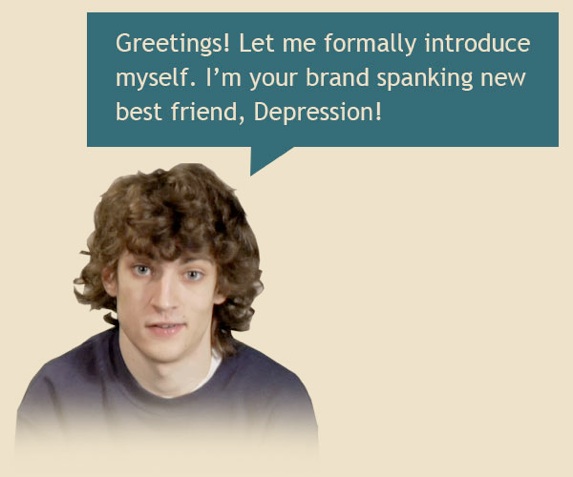Latest Public Service Radio Minute
Loss of EmploymentLoss of Employment, MP3, 1.3MB
Listen to or download all our PSAsSupport Our Work
Please donate so we can continue our work to reduce the stigma of psychiatric illness, encourage research, and support educational activities for behavioral health professionals and the public. Ways you can donate and help are on our Support and Donations page. Thank you!
More InfoLatest News Around the Web
Professor: Hypnosis May Be A Legitimate Therapeutic Technique
CNN (8/20, Gallman) reports that according to David Spiegel, professor of psychiatry and behavioral sciences at Stanford University, hypnotherapy is “literally the oldest Western conception of a psychotherapy.” For over 40 years, Spiegel “has been conducting studies about the benefits of hypnosis” and “said there is no doubt that hypnosis works as an effective therapeutic technique to manage pain and kick bad habits.”
Related Links:
— “Not just for TV: Hypnosis legit part of comprehensive treatment plan,” Stephanie Gallman, CNN, August 18, 2015.
New Video Promotes Help For Lawyers With Substance Abuse Or Mental Health Issues
The San Antonio Business Journal (8/19, Saporito, Subscription Publication) reports that “an initiative by a San Antonio lawyer has led to the production of a new video from the State Bar of Texas to inspire lawyers struggling with substance abuse and mental health issues to seek help.” The video “uses personal stories from Texas attorneys to show how the Texas Lawyers’ Assistance Program, or TLAP, can change lives.”
Related Links:
— “New video reaches out to lawyers with substance abuse, mental health issues,” Susan Saporito, San Antonio Business Journal, August 18, 2015.
Having Mentally Stable, Happy Friends May Help Improve The Mood Of Those Who Are Depressed
The Telegraph (UK) (8/19, Knapton) reports that researchers in the UK who “studied 2,000 teenagers to see if their social groups could influence how they felt about life” discovered that “having mentally stable, happy friends helped to improve the mood of those who were depressed.” Interestingly, “depressed people did not seem to have an impact on the state of mind of those around them,” the study revealed. The findings appeared in the journal Proceedings of the Royal Society B.
Related Links:
— “Depression is not contagious but an upbeat mood is, say scientists,” Sarah Knapton, The Telegraph, August 19, 2015.
Perinatal Depression Remains Underreported Despite Increased Awareness, Experts Say
The Detroit Free Press (8/18) reports that the “American College of Obstetricians and Gynecologists estimates one in seven women experience depression during pregnancy or within 12 months of delivery.” Yet despite increasing awareness “of postpartum depression or ‘the baby blues,’ anxiety and depression during pregnancy remain underreported, with no standard screening procedures in place, experts say.” Less than “20% of women diagnosed during postpartum had self-reported symptoms, according to” ACOG. In a May report, ACOG recommended that women be screened for depression “at least once.”
Related Links:
— “Depression doesn’t always wait until the baby comes,” Alison Bowen, Detroit Free Press, August 18, 2015.
Physician: Social Media Access May Help Teens Recover From Depression, Anxiety.
In a special piece for CNN (8/19), Melinda Ring, MD, FACP, medical director of the Osher Center for Integrative Medicine and the Drs. Pat and Carl Greer Distinguished Physician in Integrative Medicine at Northwestern University Feinberg School of Medicine, writes that according to a recent review of 10 studies published “in the journal JAMA Pediatrics, 23% of teens report they are or have been the target of cyberbullying.”
But, in Dr. Ring’s personal experience as the mom of two adolescents, “allowing a teen access to social media can also be a crucial part of recovery from depression and anxiety.” When Dr. Ring’s son Matthew dealt with “anxious and depressive feelings,” the family and Matthew’s therapist successfully worked with him “to find sites that were an actual support, offering messages of ‘staying strong.’” Dr. Ring also points out that according to the NIMH, “in 2012, an estimated 2.2 million adolescents, or 9.1% of the US teen population (ages 12 to 17), had at least one major depressive episode in the past year.”
Related Links:
— “Teen depression and how social media can help or hurt,” Dr. Melinda Ring, CNN, August 6, 2015.
Foundation News
Nothing Found
It seems we can’t find what you’re looking for. Perhaps searching can help.

